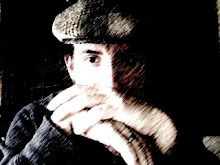Procedural Universe
Finally, I've decided to get back to the purpose that this blog was originally constructed for and that is generating a procedural universe.
What is a "procedural universe" you may ask? In short, it is a convincing enough representation of a fictional universe that is mathematically defined. This would allow for a computer program to generate an entire universe on the fly, only calculating the pieces you're currently looking at rather than having to construct everything at once and then sift through the data.
Imagine: You're viewing an image of the large scale structure of the cosmos. You click on a cluster of galaxies and you zoom in. You then click on a single galaxy and zoom in to where you can see individual stars. Click on a star, and if there are planets around it, they'll display on the screen. Click on a planet, and you'll be able to walk across its terrain. From there, you could, say, click on a city on the planet's map and zoom in to where you can see individual buildings, and from there, click on individual inhabitants of each building.... Or do it in reverse... Whew. :-)
Many people may say, "Well, isn't that something similar to what Maxis is doing with their new game Spore?" ... Similar, I admit. My work on procedural universes started many years before Spore was announced, and its scope was more confined to how it would help out with traditional "pen and paper" roleplaying games (you know, the kind that actually have a storyteller rather than a computer who tells you what happens). As such, the level and attention to detail that I've been going for is much higher than one would find in your average video game.
In the next two articles I post here, I'll be going over the most important tool towards procedural universe generation known to man: Perlin Noise. I'll then follow it up with how to decently simulate the large-scale structure of the cosmos.
From there, my path is still a bit fuzzy, but I promise I'll incorporate random galaxy generation (from elliptical to spiral to irregular), star generation, planet generation using dole's accretion algorithm and other methods, fractal terrain generation with a section on how to calculate map projections and color schemes, city generation, building generation, and many more.
Peace,
-Steve Caruso
What is a "procedural universe" you may ask? In short, it is a convincing enough representation of a fictional universe that is mathematically defined. This would allow for a computer program to generate an entire universe on the fly, only calculating the pieces you're currently looking at rather than having to construct everything at once and then sift through the data.
Imagine: You're viewing an image of the large scale structure of the cosmos. You click on a cluster of galaxies and you zoom in. You then click on a single galaxy and zoom in to where you can see individual stars. Click on a star, and if there are planets around it, they'll display on the screen. Click on a planet, and you'll be able to walk across its terrain. From there, you could, say, click on a city on the planet's map and zoom in to where you can see individual buildings, and from there, click on individual inhabitants of each building.... Or do it in reverse... Whew. :-)
Many people may say, "Well, isn't that something similar to what Maxis is doing with their new game Spore?" ... Similar, I admit. My work on procedural universes started many years before Spore was announced, and its scope was more confined to how it would help out with traditional "pen and paper" roleplaying games (you know, the kind that actually have a storyteller rather than a computer who tells you what happens). As such, the level and attention to detail that I've been going for is much higher than one would find in your average video game.
In the next two articles I post here, I'll be going over the most important tool towards procedural universe generation known to man: Perlin Noise. I'll then follow it up with how to decently simulate the large-scale structure of the cosmos.
From there, my path is still a bit fuzzy, but I promise I'll incorporate random galaxy generation (from elliptical to spiral to irregular), star generation, planet generation using dole's accretion algorithm and other methods, fractal terrain generation with a section on how to calculate map projections and color schemes, city generation, building generation, and many more.
Peace,
-Steve Caruso
Labels: procedural, universe



1 Comments:
Hi Steve
It's a bold task - do you need help? I created a Google Group for people with your vision - and hope you join us!
The group is Stil very small - but growing (started last week) - and already consist of medial doctors, AI math guys, graphics people, Voxel/Volumetric programmers - and business/project organizers (myself).
The Google Group is called Virtual Biosphere"
I hope you will visit and team up :)
Adam
Post a Comment
<< Home